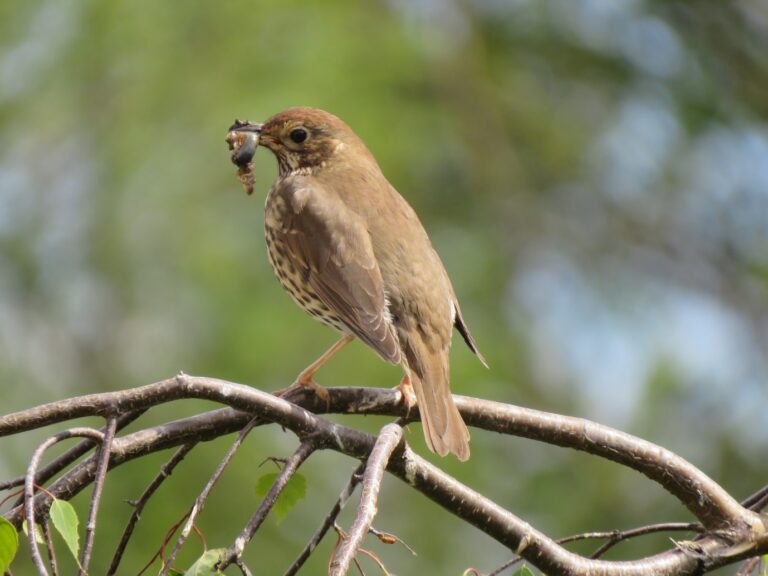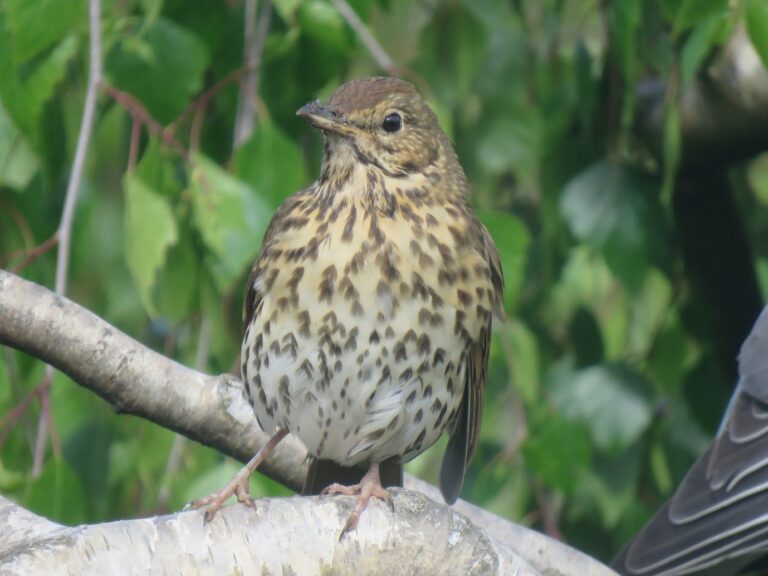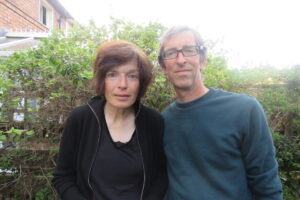Tune in to ‘Thurshwatch’ as naturalists, Philip Jordan and Jane Gray, share their lockdown wildlife observations
It was two years since we’d seen a Song Thrush in our garden when a Blackbird chased one away in mid-February. By April, there were two thrushes and they were refusing to be bullied by the Blackbirds. The female started building a nest in the honeysuckle only one and a half metres from our conservatory. Under social distancing, we could be closer to Song Thrushes than to other people!
From an upstairs window, we could see into half the nest. Surely, a magpie or a cat would also see it and raid it. Five spotted blue eggs appeared in the nest. We named the female ‘Mavis’, using an old folk name for Song Thrush. Whenever she took a break from incubating, the male, who we called ‘Maverick’, would stand on the rim of the nest, guarding the eggs.

One afternoon, a cacophony of alarms alerted us to the first Magpie attack. The pair of thrushes combined to somehow fight off the intruder, more than twice their size. We knew the Magpie would be back.
Two days later, Maverick brought some food to the nest and passed it to Mavis. She bent down and a tiny beak reached up to take it. Soon, there were five chicks. Then the Magpie came back.

It was chaos of noise and movement as the throstles fought beak and claw. Maverick pursued the Magpie down the garden and they locked in claw-to-claw combat on the ground. I rushed out to find a thrush tail, wing, and breast feathers lying in the grass. I could only make out four chicks in the nest. The magpie must have taken one. Maverick had a gap in his tail, a dishevelled look, and a limp. Reluctant to put weight on his right foot, his right-wing would shoot out as he struggled for balance. It was hard to see the beautiful bird we’d seen singing from the top of his birch tree reduced to this.
A Wren collected Maverick’s lost breast feathers to line its nest. He remained fierce in his defence of the nest despite his injuries, attacking a surprised pair of Jackdaws who were plucking the stuffing out of a soft toy on next door’s lawn to line their nest. Maverick started using a brick near the conservatory as an anvil to break open snails.
As the fledglings became larger and more visible in the nest, we realised that there were still five! The magpie hadn’t got one after all! Four of the young thrushes left the nest early one morning; the fifth hung around for another five hours. One got stuck on the conservatory roof! It was belly-down on the smooth sloping surface. Every time it tried to scramble up, it slid all the way back down again. I was able to lift it down and release it. Maverick brought it some worms.
Maverick sometimes still sings from his birch tree. He’s now putting weight on his right foot.
About the authors
Philip Jordan and Jane Gray live in Gosforth Garden Village, a twenty-minute walk from Gosforth Nature Reserve.

They spend a lot of time at the reserve: ringing birds, looking after the nest boxes, carrying out butterfly surveys, helping with educational visits, and with work party tasks. In fact, they ringed Mavis which meant that they could tell which of the thrushes they were looking at.